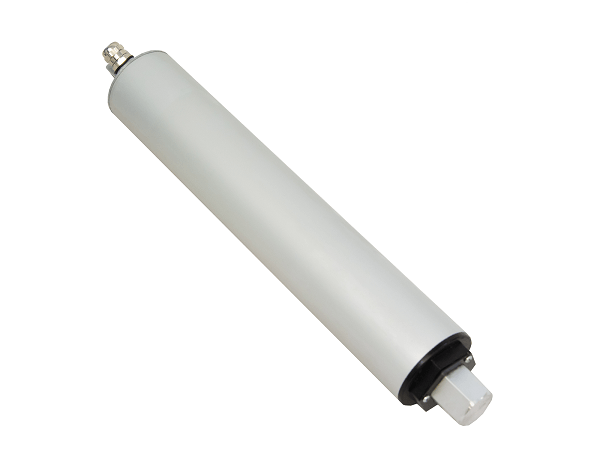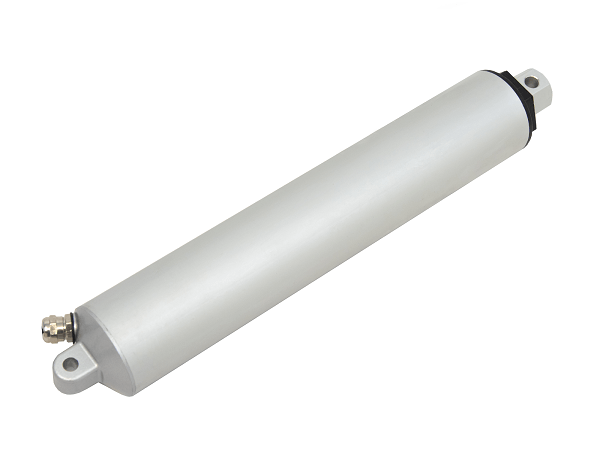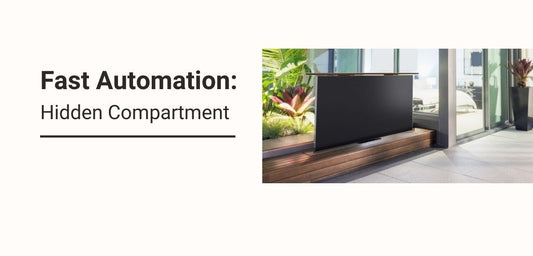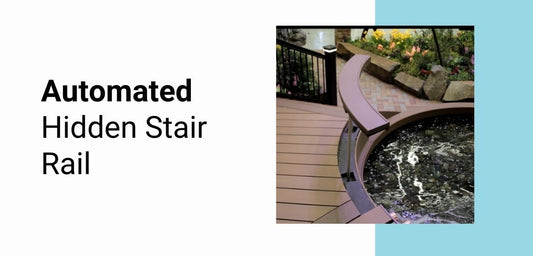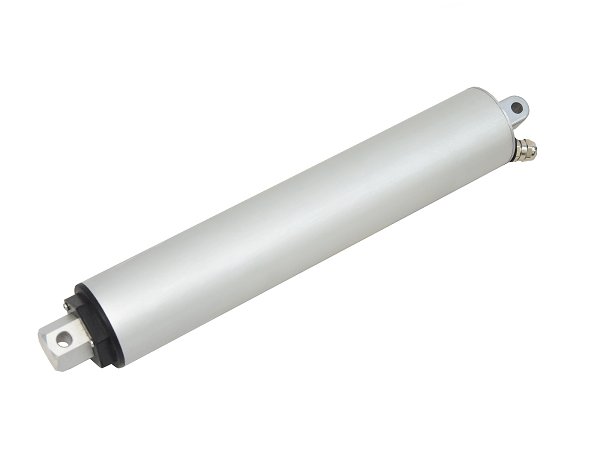

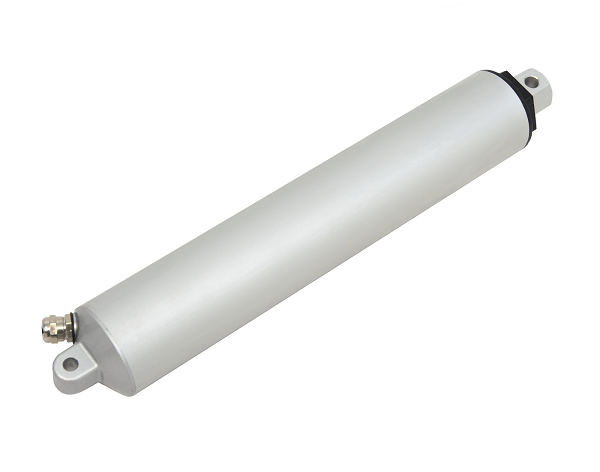
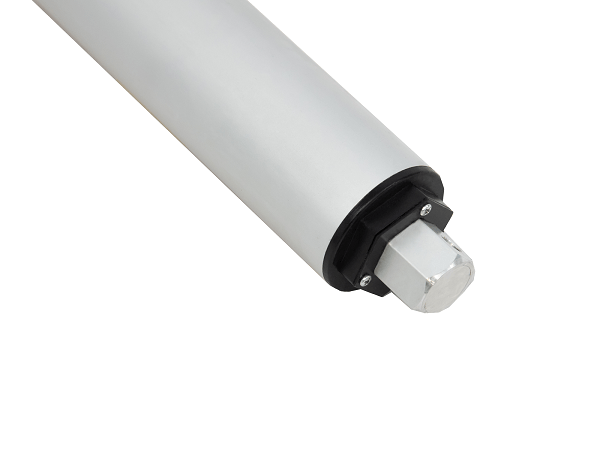
O Atuador linear de alta velocidade PA-15 é a unidade mais rápida da nossa linha de produtos. O pequeno diâmetro externo da carcaça do eixo e a haste do atuador criam uma unidade ideal para aplicações com espaço limitado. Setores como o automotivo, a robótica e a automação residencial se beneficiam do design de motor em linha.
Para garantir o funcionamento correto, o atuador deve operar com, no máximo, 50% da carga nominal total.
Para ver a lista completa de especificações, opções de personalização e desenhos dimensionais, consulte nossa Ficha técnica PA-15.
OPÇÕES DE MONTAGEM:
O conjunto de suportes BRK-15, projetado para o Atuador linear de alta velocidade, permite um processo de instalação simples. Para informações e especificações mais detalhadas, consulte nossa página de suportes.
SISTEMAS DE CONTROLE:
O consumo de corrente deste atuador linear elétrico permite a conectividade com a maioria dos nossos sistemas de controle. Para mais informações sobre nossas caixas de controle plug-and-play e microcontroladores para desenvolvimento, consulte nossa página de sistemas de controle.
O Atuador linear de alta velocidade PA-15 é a unidade mais rápida da nossa linha de produtos. O pequeno diâmetro externo da carcaça do eixo e a haste do atuador criam uma unidade ideal para aplicações com espaço limitado. Setores como o automotivo, a robótica e a automação residencial se beneficiam do design de motor em linha.
Para garantir o funcionamento correto, o atuador deve operar com, no máximo, 50% da carga nominal total.
Para ver a lista completa de especificações, opções de personalização e desenhos dimensionais, consulte nossa Ficha técnica PA-15.
OPÇÕES DE MONTAGEM:
O conjunto de suportes BRK-15, projetado para o Atuador linear de alta velocidade, permite um processo de instalação simples. Para informações e especificações mais detalhadas, consulte nossa página de suportes.
SISTEMAS DE CONTROLE:
O consumo de corrente deste atuador linear elétrico permite a conectividade com a maioria dos nossos sistemas de controle. Para mais informações sobre nossas caixas de controle plug-and-play e microcontroladores para desenvolvimento, consulte nossa página de sistemas de controle.
| Tensão de entrada | 12 VCC, 24 VCC, 36 VCC, 48 VCC |
| Recorrido | 1" a 30" |
| Feedback | Nenhum |
| Ciclo de trabalho | 20% (4 minutos ligado, 16 minutos desligado) |
| Grau de proteção IP | IP54 |
| Proteção contra sobrecarga | Nenhuma |
| Temperatura de operação | -25°C a 65°C |
| Ruído de operação | <45dbA |
| Fim de curso | Interno - Não ajustável |
| Comprimento do cabo | 40" (personalizável) |
| Conector | Molex Mini-Fit Jr 2-Pin |
| Tamanho do furo de montagem frontal | 0,34" |
| Tamanho do furo de montagem traseiro | 0,34" |
| Tipo de Motor | CC com escovas |
| Tipo de Parafuso | ACME |
| Material da haste | Liga de alumínio |
| Material da Carcaça | Liga de alumínio |
| Material da Engrenagem | Liga de aço por metalurgia do pó |
| Certificações | CE, RoHS |
| Suportes de montagem compatíveis | BRK-15 |
Seguir um conjunto de normas é fundamental para que as empresas garantam que seus produtos e serviços atinjam um nível de qualidade que promova a satisfação do cliente. Na Progressive Automations, buscamos sempre o melhor para nossos clientes e nos esforçamos por melhorias contínuas. Por isso, temos o prazer de anunciar que a Progressive Automations agora é certificada pela ISO 9001:2015!
Qualidade em que você pode confiar – Saiba maisDepending on your application, there are different specification requirements you should consider when determining the linear actuator you need. These requirements include force, stroke, speed and mounting dimensions. For detailed actuator information, you can refer to either the datasheet or the specification table located on the selected actuator's product page. You can also contact us to speak with one of our expert engineers.
Ciclo de trabalho é a fração do período de operação em que um atuador linear pode permanecer ativo. Você pode calcular o Ciclo de trabalho de um atuador linear usando a seguinte equação: Ciclo de trabalho (%) = (Tempo em que o atuador linear fica ativo) / (Tempo de um período de operação)
Por exemplo: com um Ciclo de trabalho de 25%, um atuador pode operar por 5 minutos continuamente antes de precisar descansar por 15 minutos antes de voltar a operar.
Recorrido é a distância percorrida pela haste de extensão. Para encontrar o comprimento de Recorrido necessário, meça sua aplicação da posição totalmente retraída até a posição totalmente estendida. A diferença será o comprimento de Recorrido necessário.
Sempre recomendamos adquirir um atuador com uma classificação de força maior do que a exigida pela aplicação. Se não tiver certeza dos seus requisitos de força, este artigo pode ajudar a calcular: Como calcular a força para encontrar o atuador linear certo
Sim, isso é possível. No entanto, depende das unidades que você está utilizando. Para sincronizar atuadores, é necessário algum tipo de Feedback, como um potenciômetro ou sensores de efeito Hall. Para mais informações, veja abaixo alguns de nossos conteúdos principais sobre sincronização de atuadores lineares.
A caixa de controle que você escolher deve ser capaz de fornecer tensão e Corrente suficientes para o seu atuador. Se você não tiver certeza das especificações, por favor, entre em contato conosco.
Alternativamente, você também pode encontrar caixas de controle compatíveis na página do produto do atuador linear selecionado.
Backdriving is when an actuator starts sliding down under load, when it is either overloaded or when the actuator has been damaged. Watch the video.
What Does Dynamic and Static Load Ratings Mean?Dynamic load rating is the amount of weight an actuator can pull or push safely when being powered. Static load rating is the amount of weight the actuator can hold or withstand without back driving when it is not being powered. For example, let's just say you have an actuator installed on a window and the static load rating of the actuator is 100lbs, it could experience backdriving when there is a high wind event, which means there will be more pressure exerted on the actuator which would exceed the 100lbs load rating of the actuator.
What Is Lateral Loading?Lateral loading is when the actuator experiences forces from the lateral plane. Actuators are not meant to handle lateral forces at all so if it experiences any lateral forces, it will likely damage the actuator or bend the rod. So it's advised never to use lateral forces and always make sure the actuator is fully in line or in sync with your application, so it does not take any load other than the axial load. Watch the video.

